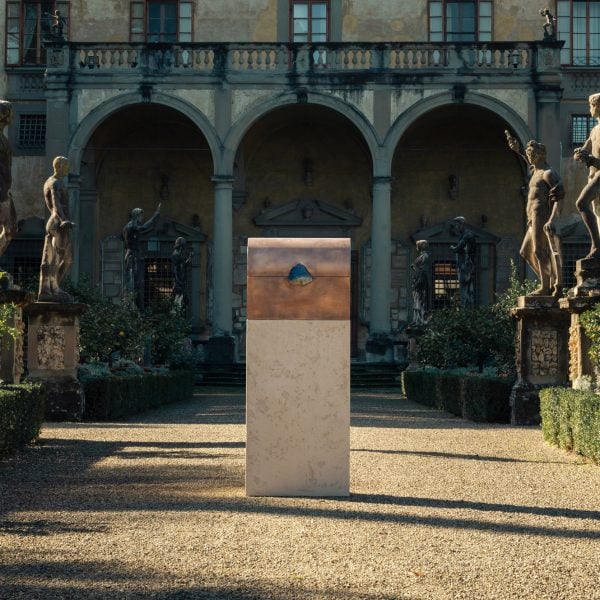Design gallery Galerie Philia has unveiled an exhibition of contemporary designs based on the collections of the Medici family in the greenhouse of Florence’s 16th-century Palazzo Corsini al Prato.
The Future Relics exhibition, created in collaboration with production firm Shifting Vision and the Medici Archive Project, was born from a year-long research process bringing together six designers from six different countries.
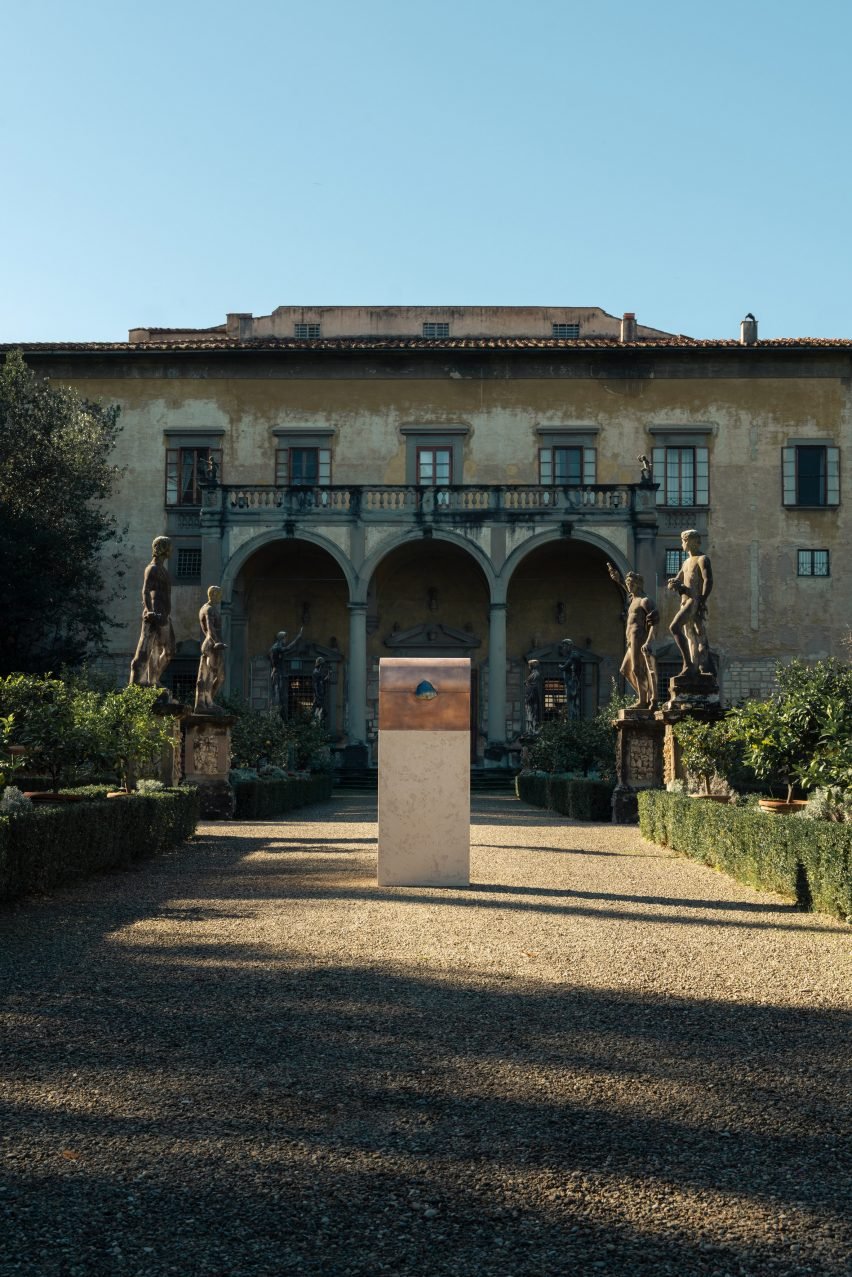
Led by a team of researchers, they scoured the palazzos and museums of Florence to see the wealth of art collected by members of the city’s influential Medici family, who were known as the “Godfathers of the Rennaisance” because their patronage helped to fund the 15th-century revival of classical arts.
Each designer then went back to their own studio to create a contemporary reinterpretation of the historical artefacts, drawing on traditional craft techniques and precious materials to explore how objects can still inspire reverence in our secular consumer culture.
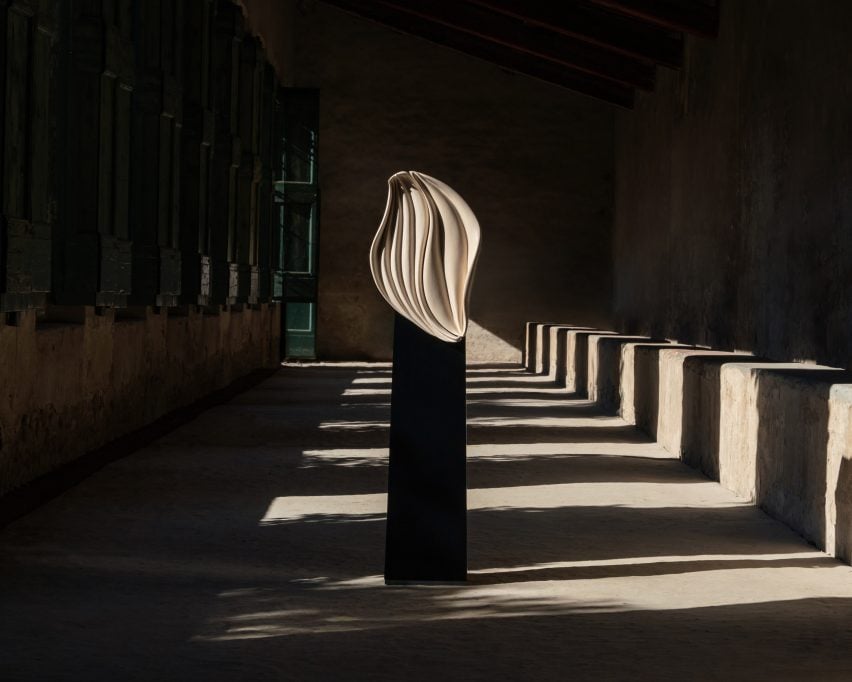
“They were asked to think about how they could make something that might become an object of reverence in the future,” Shifting Vision’s head curator Jemma Elliott-Israelson told Dezeen.
“Today, we have so many things to consume and so much of it feels throw-away. But everything made in the Renaissance was made with the idea of beauty and sustainability in mind, like it’s something you’ll have forever.”
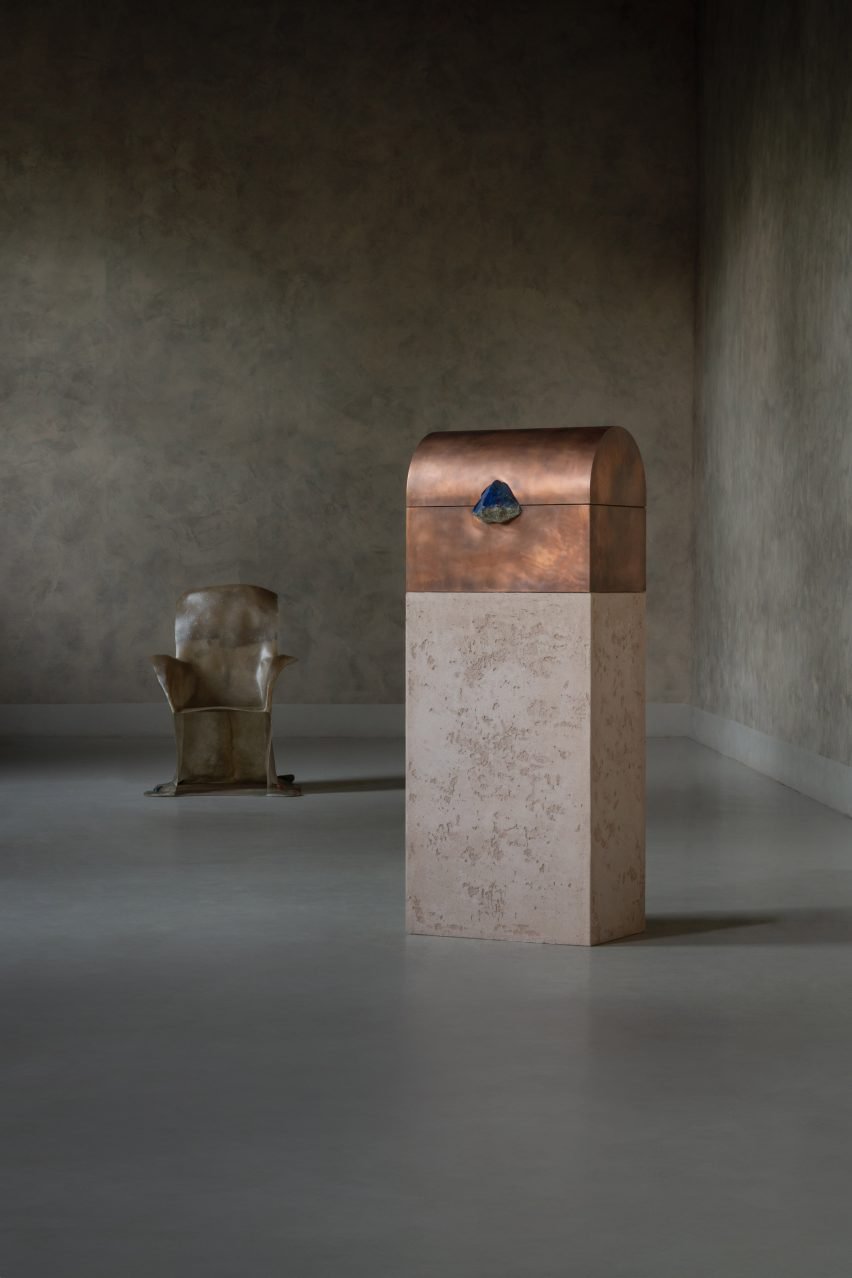
Belgian designer Pierre De Valck created a pared-back interpretation of Valerio Belli’s ornately engraved Medici Chest in patinated bronze, with a simplified form designed to evoke a child’s drawing of a treasure box.
In this case, the treasure is a chunk of lapis lazuli stone that also serves as the handle, referencing the vibrant blue pigment’s use in Renaissance art. At one point it was more valuable than gold and had to be painstakingly imported from Afghanistan via the Silk Road.
“It was the most expensive pigment, which is why the Virgin Mary was always painted in blue,” Elliott-Israelson said. “The process of actually getting it here was so complicated, it had to go through so many different hands.”
“Still today for Pierre to acquire this, he had to go through so many different stages because there’s a trade embargo between Afghanistan and Europe.”
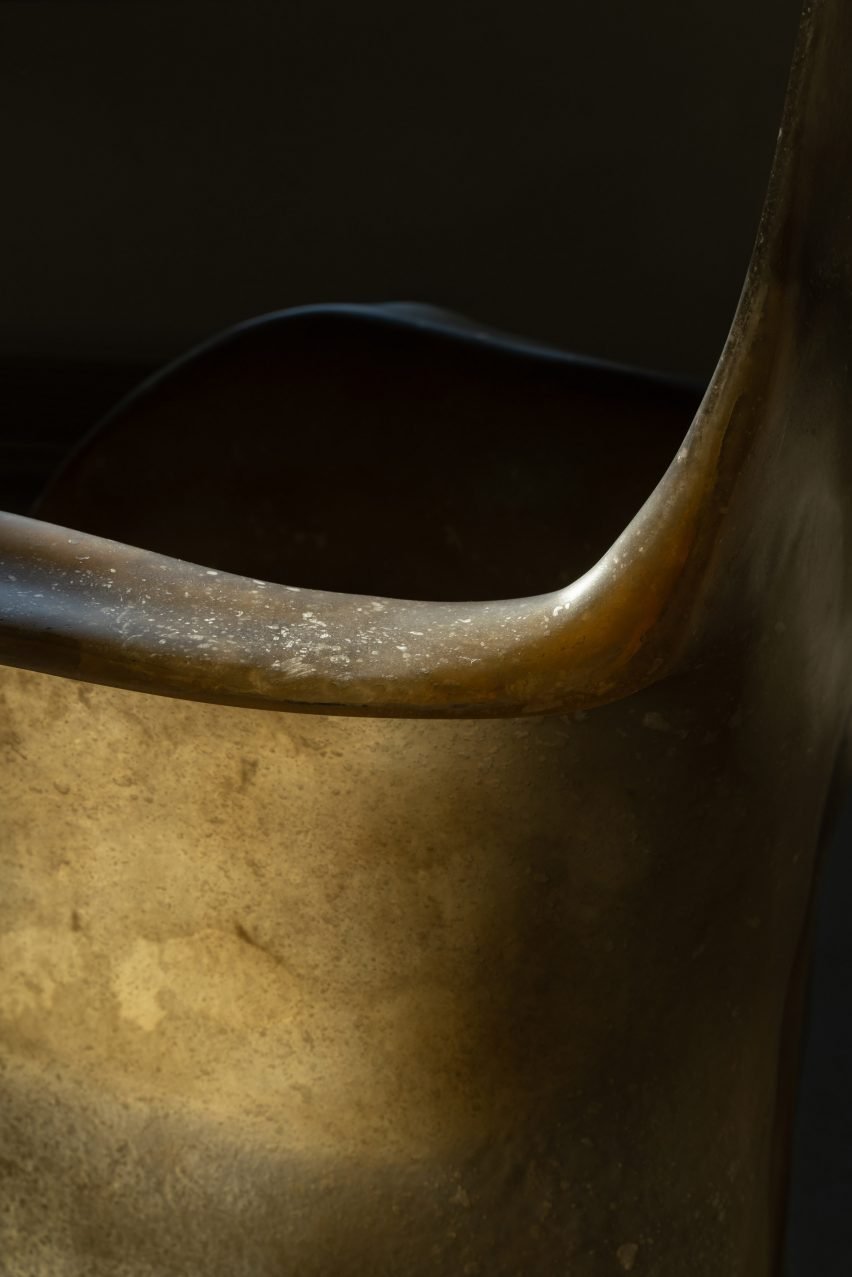
Semi-precious stones also feature in pieces by several other designers as a homage to the traditional Florentine stone inlay technique known as pietra dura.
Coloured jade adorns the feet of a translucent fibreglass chair by Guangzhou firm Kar Studio to symbolise the four natural elements found in both Renaissance art and Chinese philosophy.
The design, based on the throne of grand duke Cosimo de’ Medici and the high-backed seats of Ming Dynasty China, aims to draw a parallel between these two periods, which studio founder Steven Yeung sees as analogous.
French designer Elsa Foulon contributed a cabinet with theatrical ceramic doors that reveal a glowing brass interior decorated with nuggets of pyrite, also known as “fool’s gold”.
In this way, it hopes to inspire the same sense of awe as the reliquary boxes made in the Rennaisance to hold sacred relics such as the body parts or ashes of a holy person.
“The piece explores the concept of a relic and contemporary perspectives on what we would choose to protect, questioning what is today considered sacred,” said Galerie Philia founder Ygaël Attali.
“An invisible but palpable thread behind all these works was the notion of sacrality and how its absence, or renewed presence, might be understood or felt in our times.”
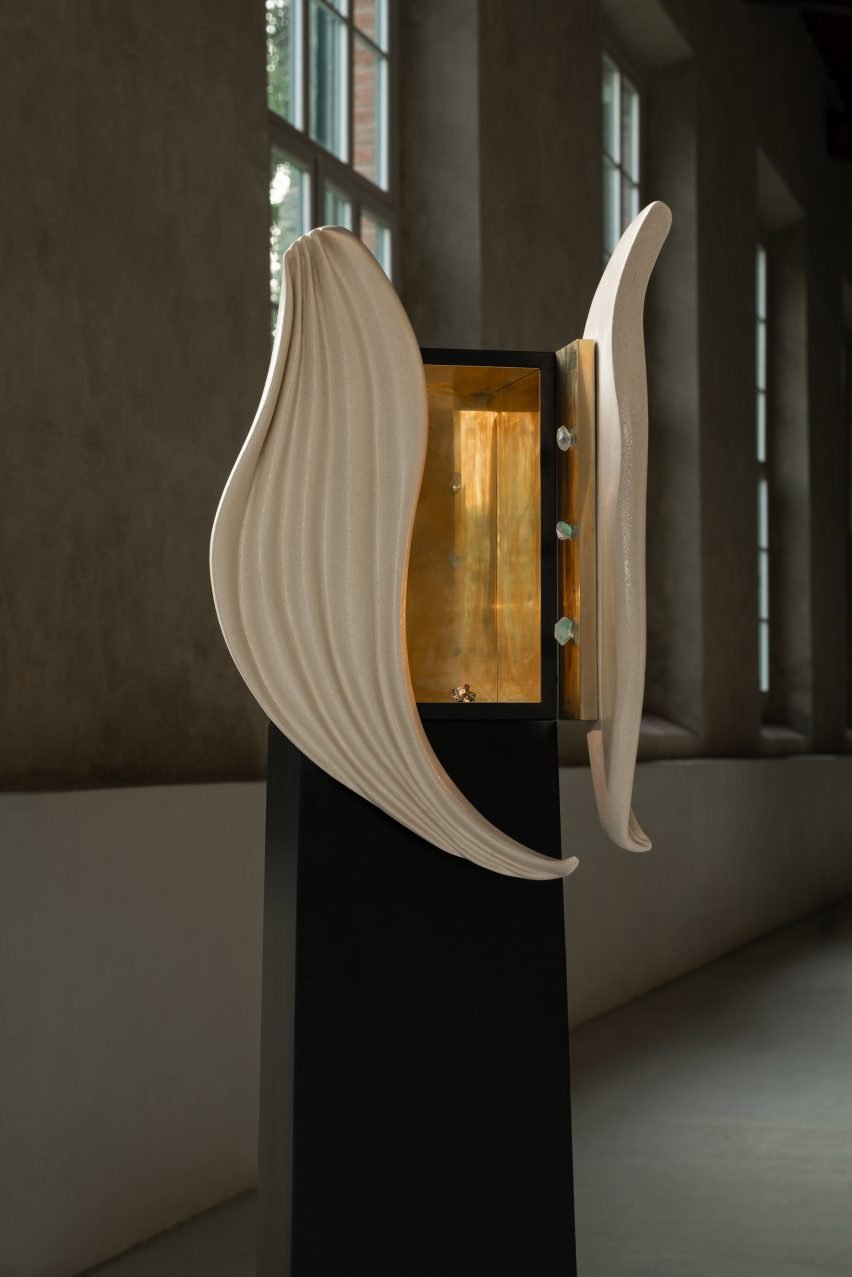
Other ceramic pieces come from Estonian designer Laura Pasquino, who created a series of sculptural vases using a formula developed by Francesco I de’ Medici’s ceramic workshop while trying to emulate Chinese porcelain.
Their partially collapsed forms nod to the 10-year trial-and-error process it took to produce Europe’s first porcelain, turning seeming faults into decorative features.
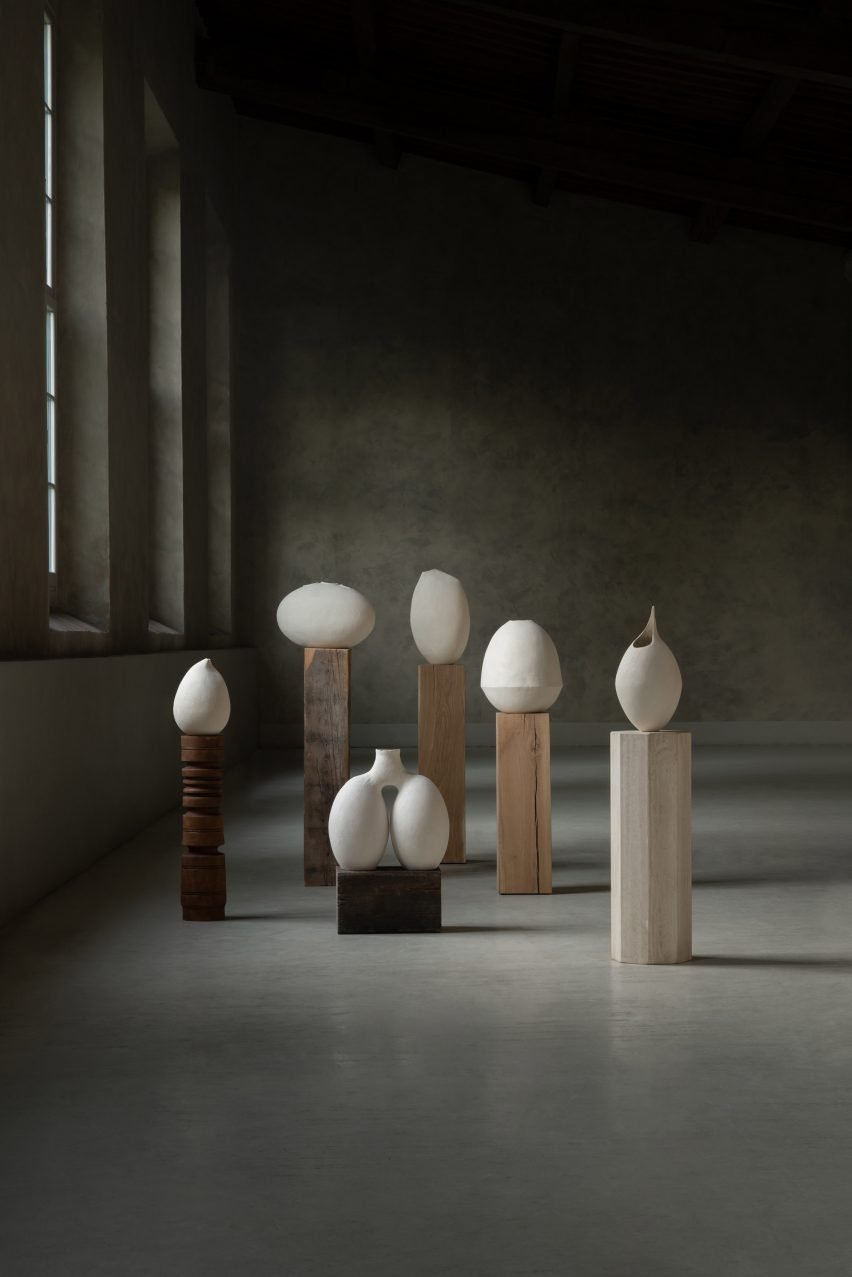
Italian duo Morghen Studio contributed a floor light that offers a modern interpretation of a classical column. This incorporated fragments of Carrara marble but was rendered mostly in brass, in a nod to the famous gilded doors of the Baptistery of San Giovanni, known as the Gates of Paradise.
The column integrates both an alabaster lamp and a twisting candelabra, with stained-glass flowers and an empty glass vial added to reflect their light.
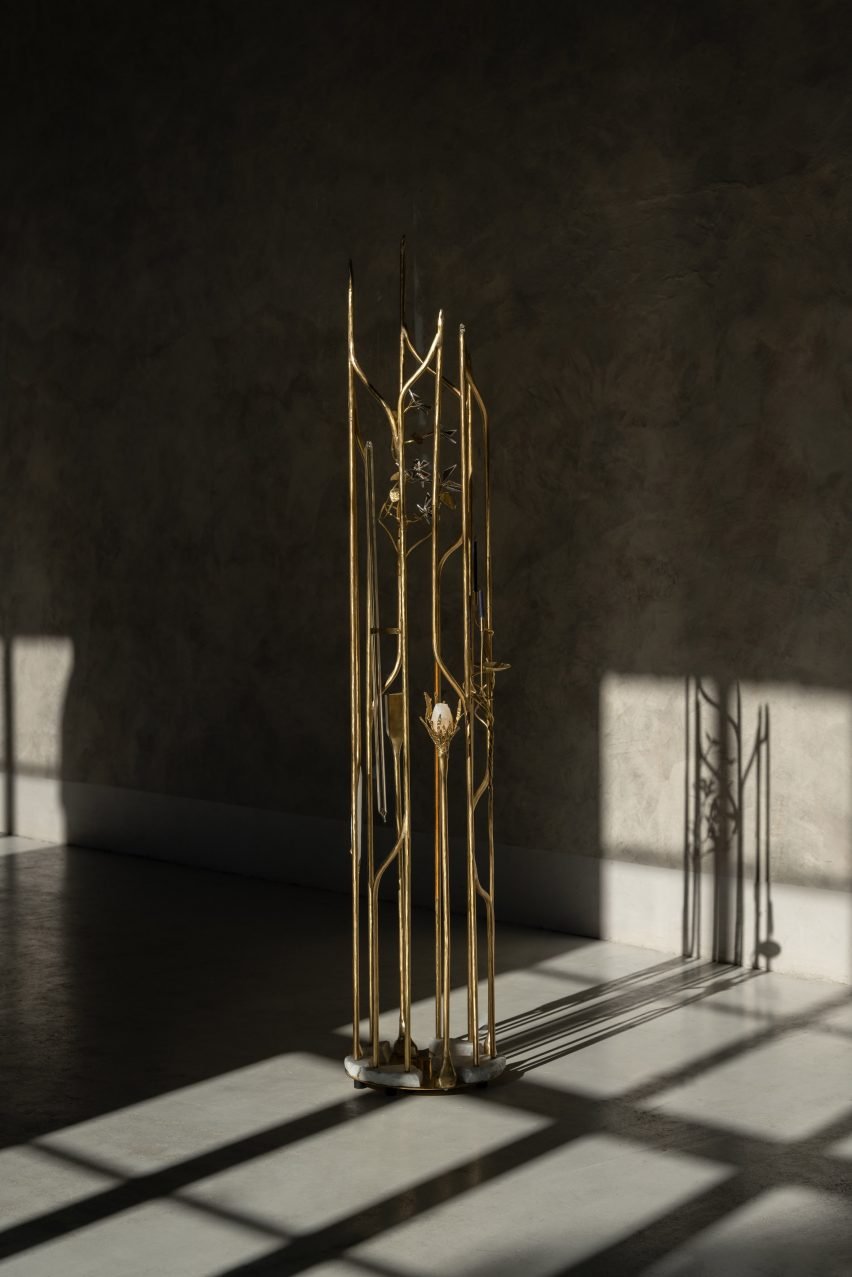
The final piece in the exhibition was meant to be a travertine and white onyx mask by Mexican designer Andrés Monnier referencing “one of the missing mysterious pieces” of the Medici collection – a green jade mask reportedly from the ancient Mesoamerican city of Teotihuacan.
However, the one-of-a-kind piece was damaged in transport and couldn’t be included in the show.
Available to view by appointment, the exhibition is set in the old limonaia – a greenhouse originally built to shelter lemon trees – of Palazzo Corsini al Prato, marking the first time the space has been used to house an exhibition.
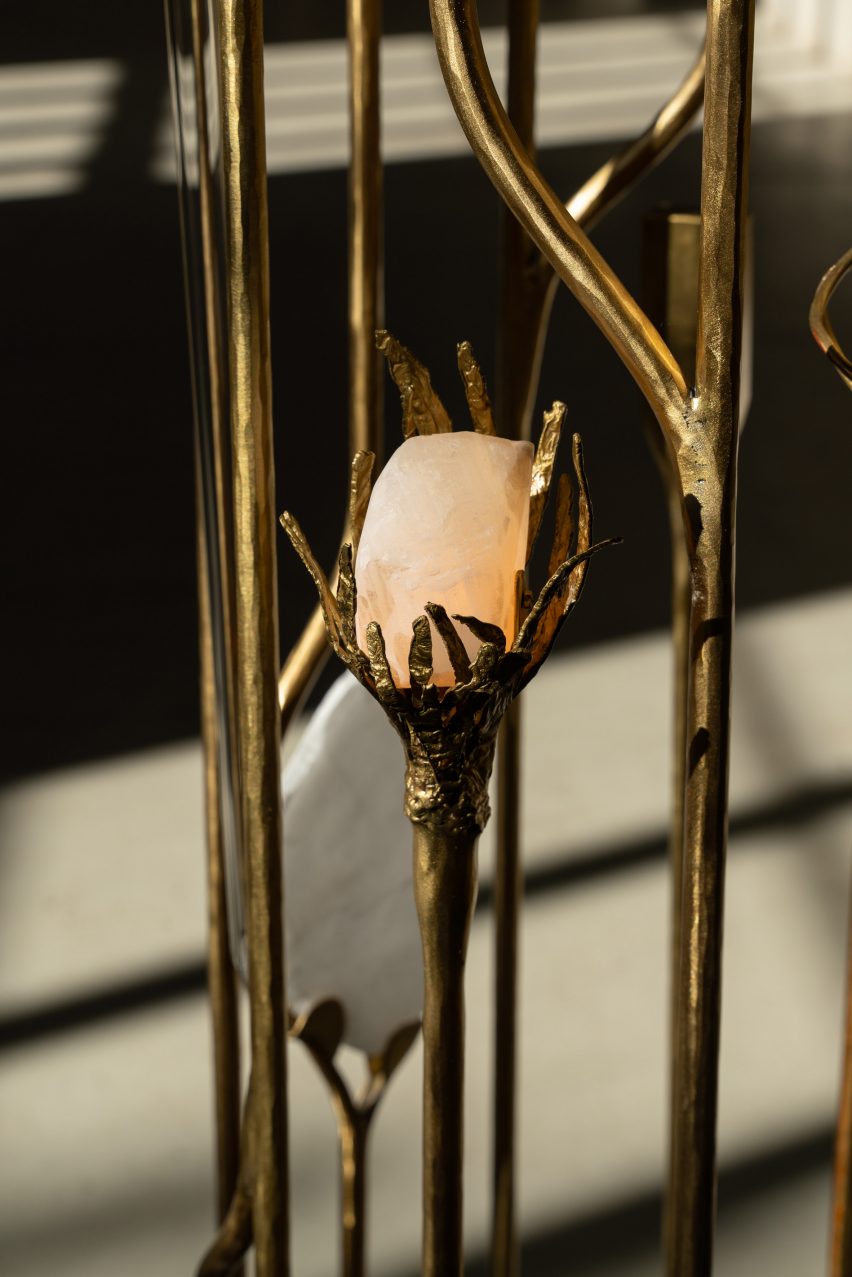
Future Relics isn’t the first project to reappraise the Medici’s legacy in recent years.
A three-year refurbishment of the 1544 Villa Medici is currently underway in Rome, aiming to establish the historical residence as a home for contemporary design.
So far, Italian fashion brand Fendi has refreshed the villa’s salons and architect India Mahdavi has updated six rooms on the upper levels, while Pratique and Fanum created a temporary plywood pavilion for the gardens.
The photography is by Studio Brinth.
Future Relics is on show at the Palazzo Corsini al Prato in Florence from 1 to 21 November 2024. See Dezeen Events Guide for an up-to-date list of architecture and design events taking place around the world.

